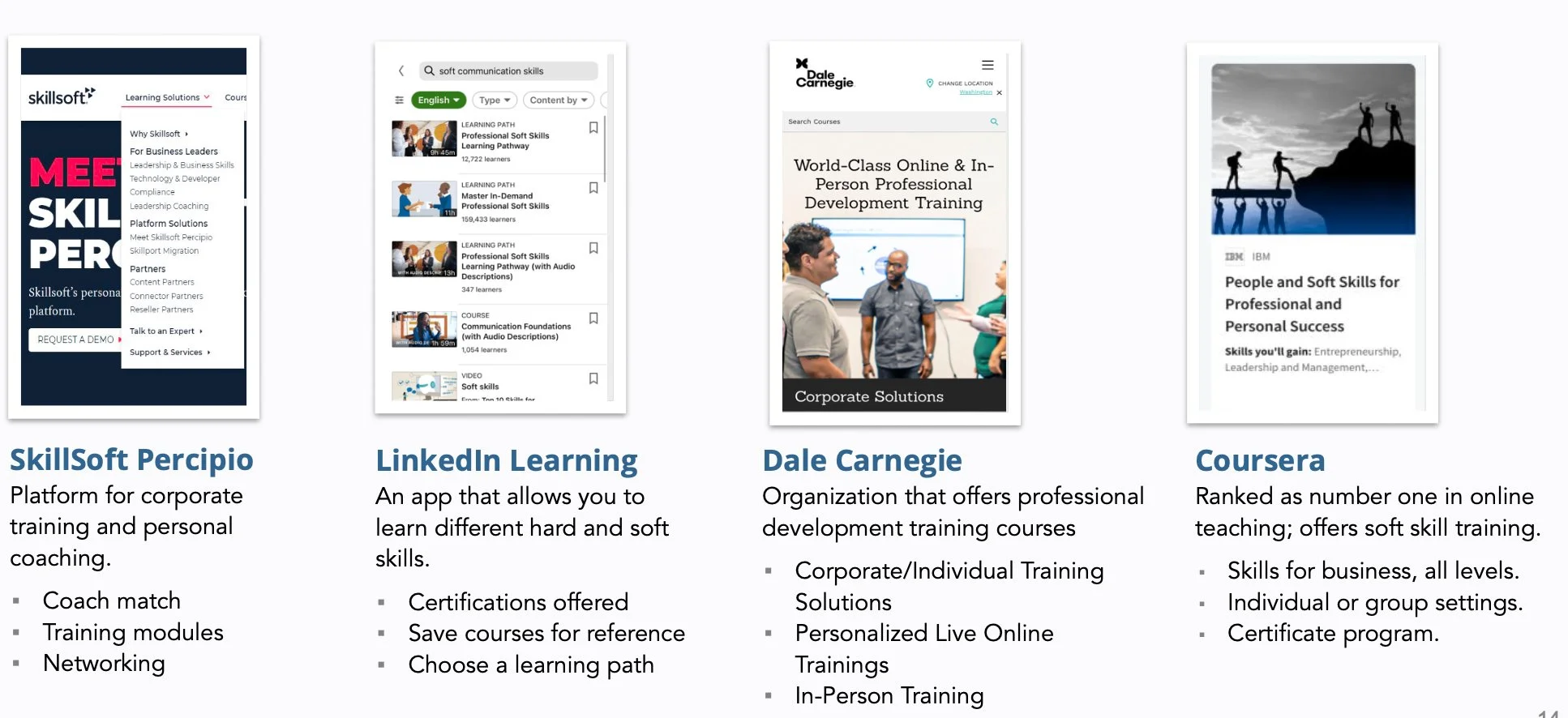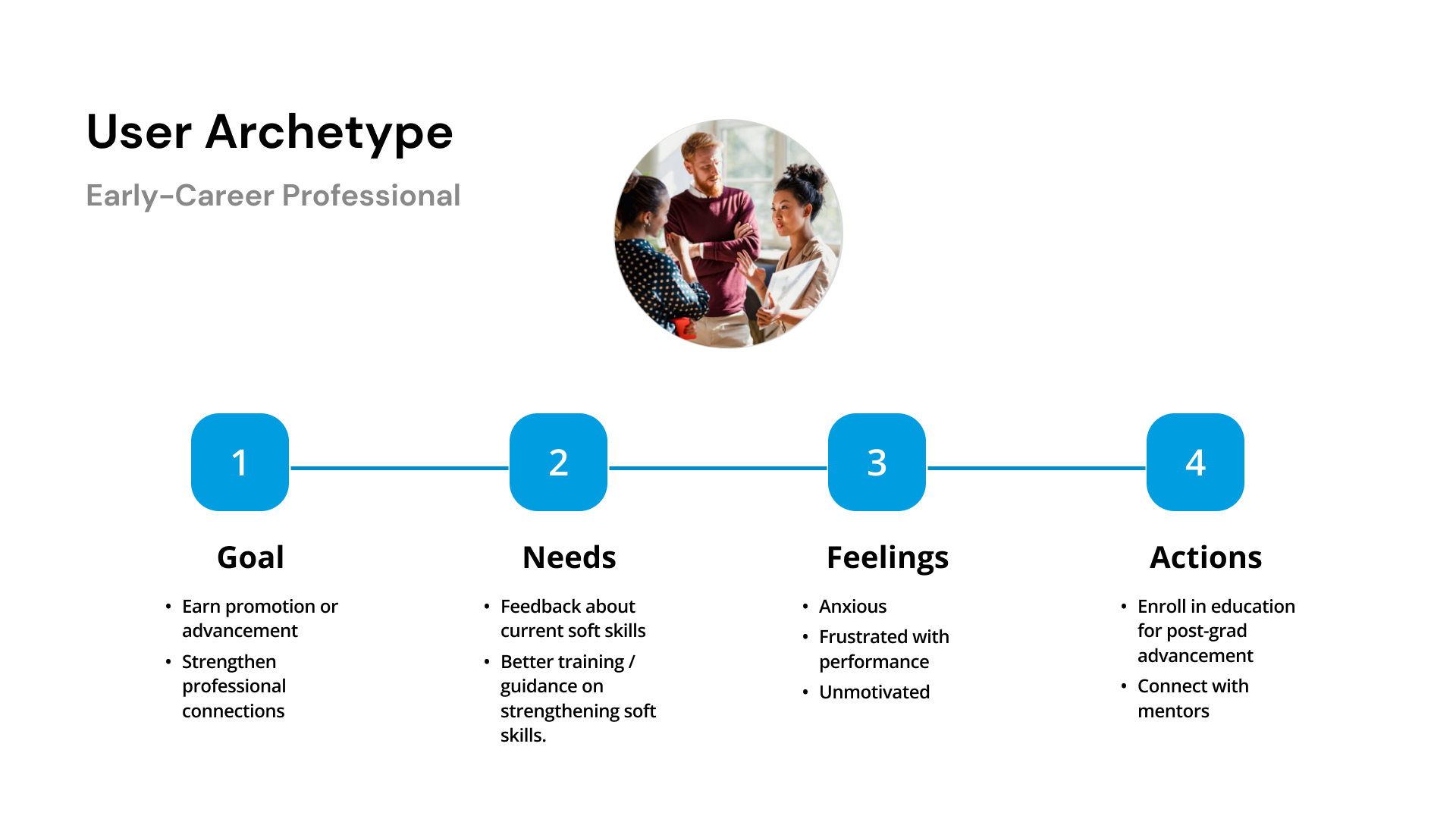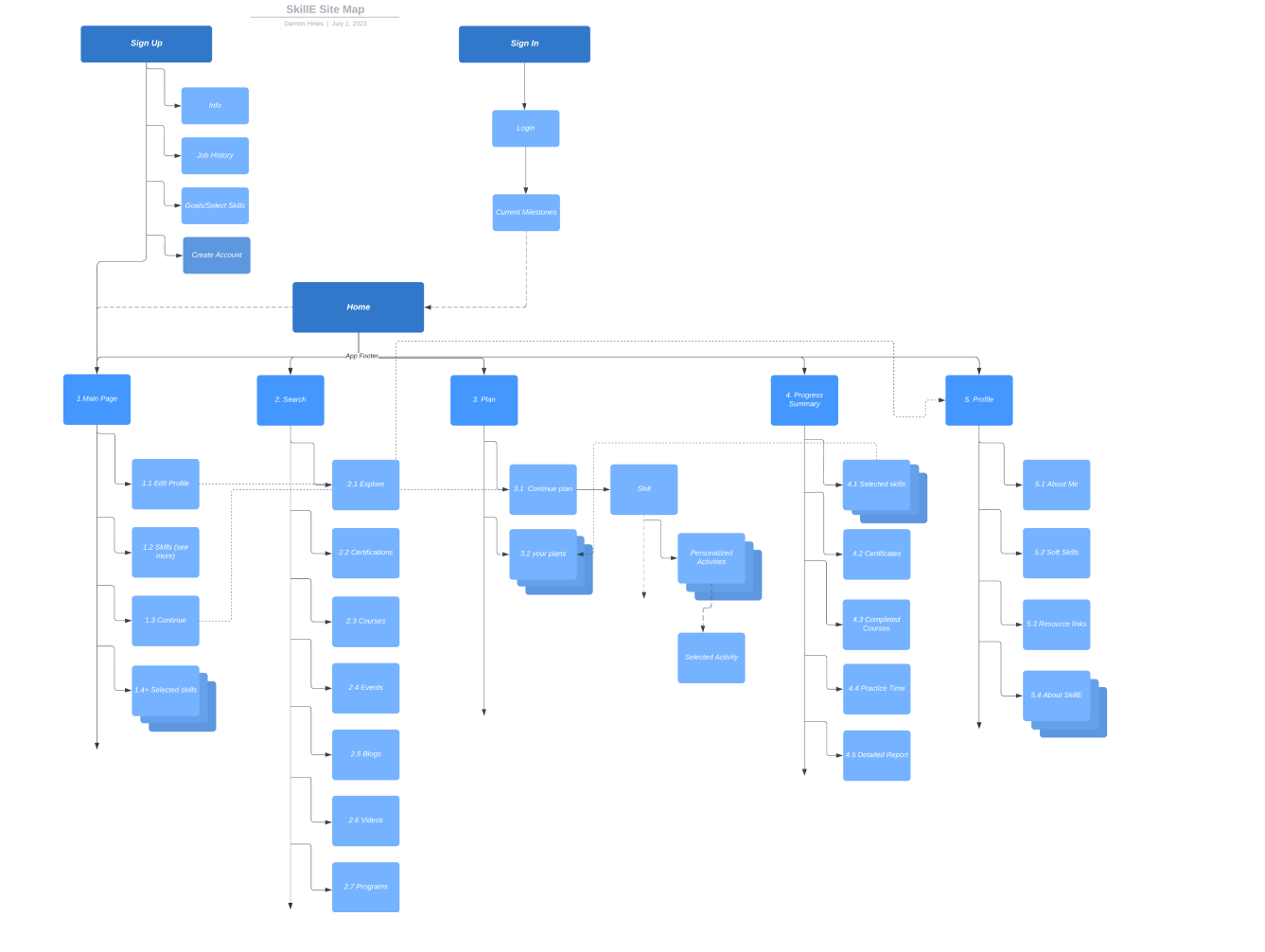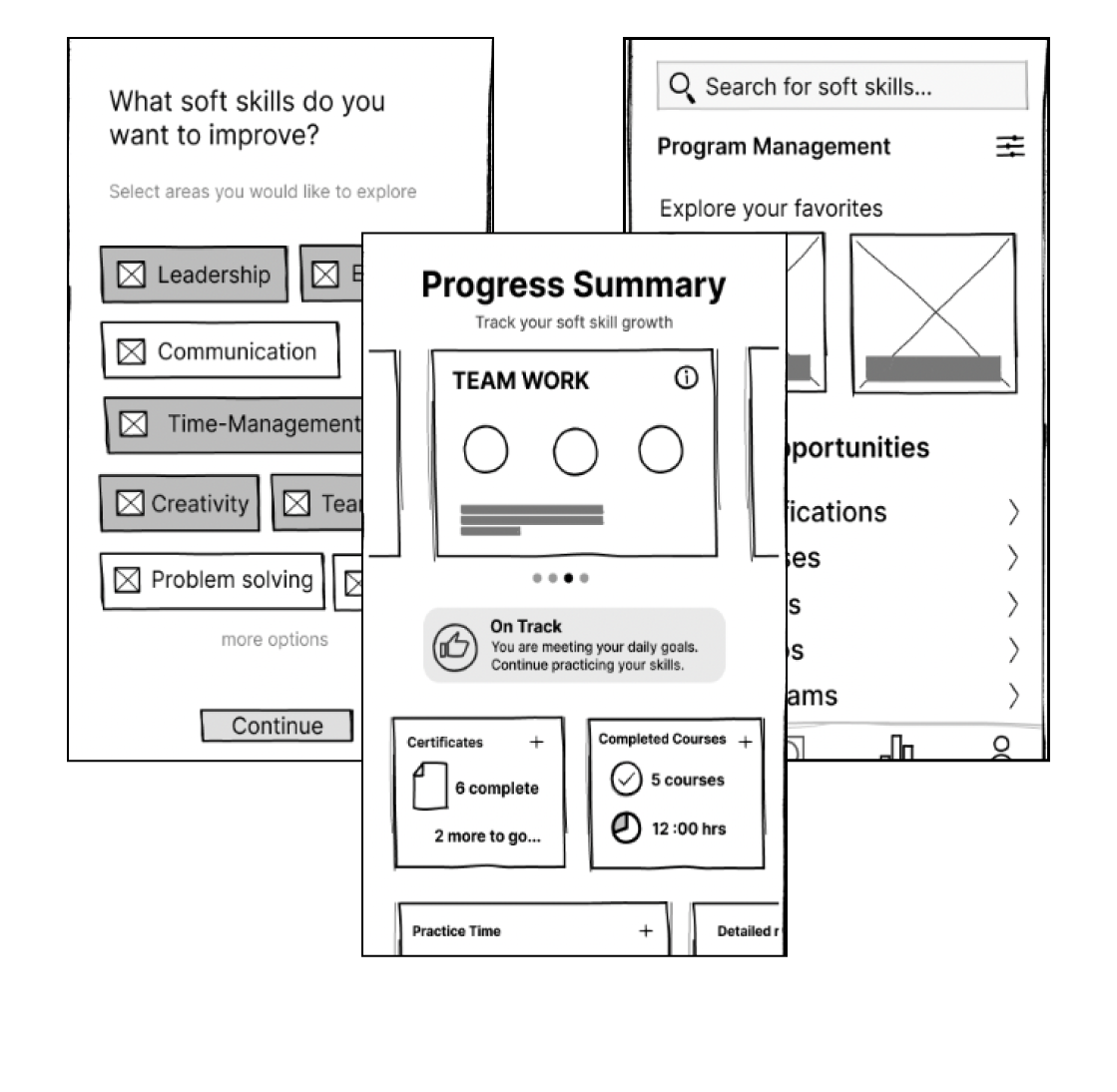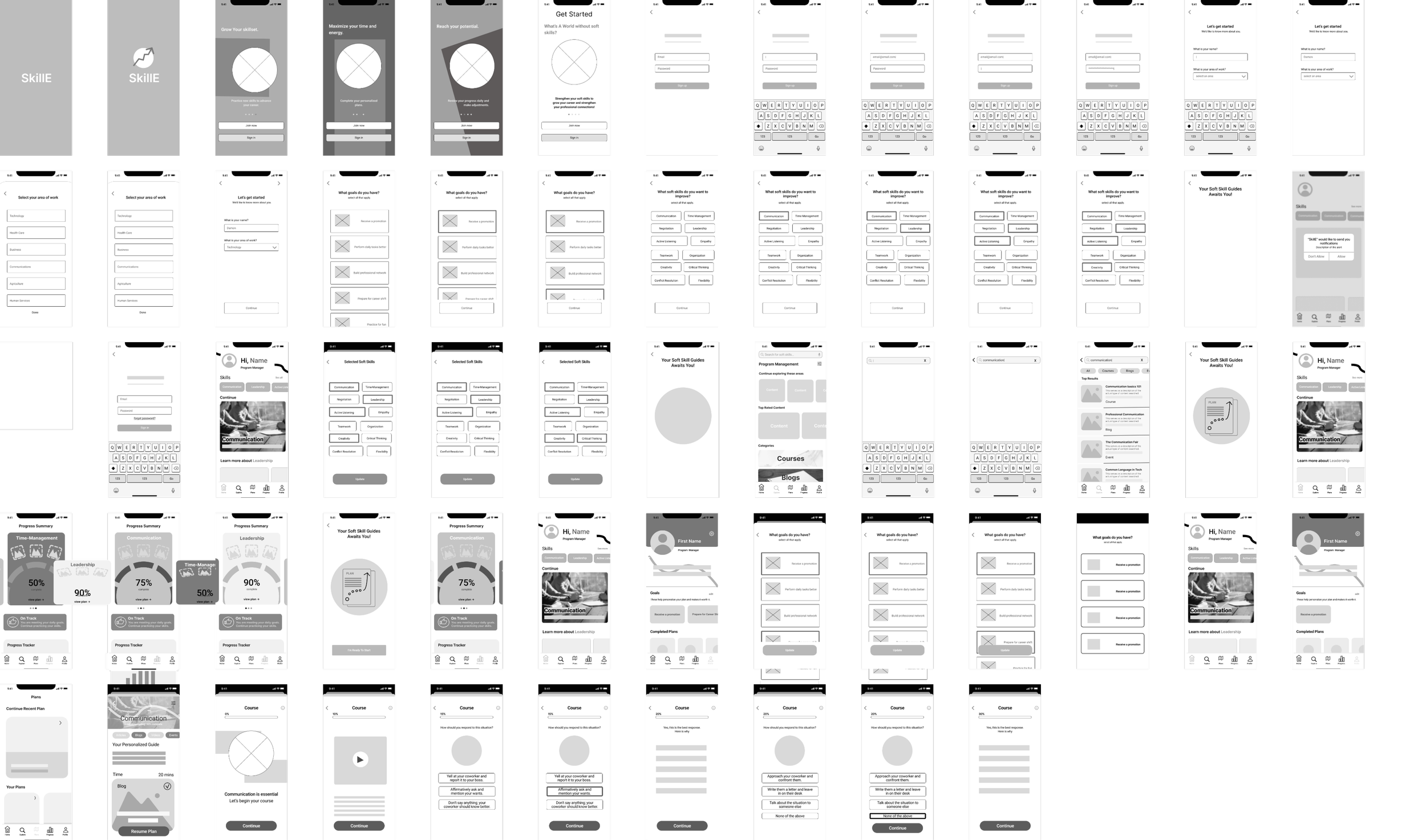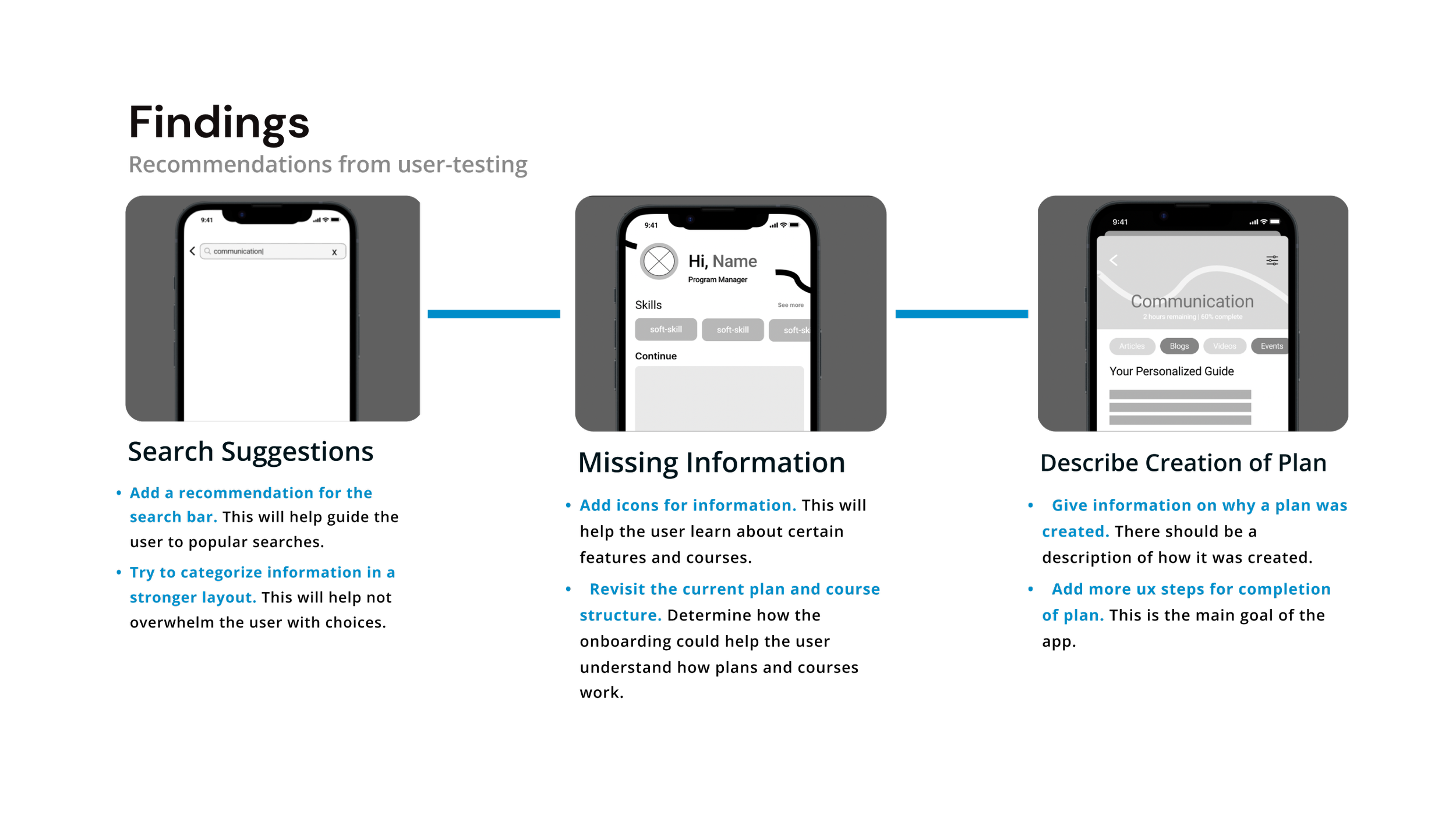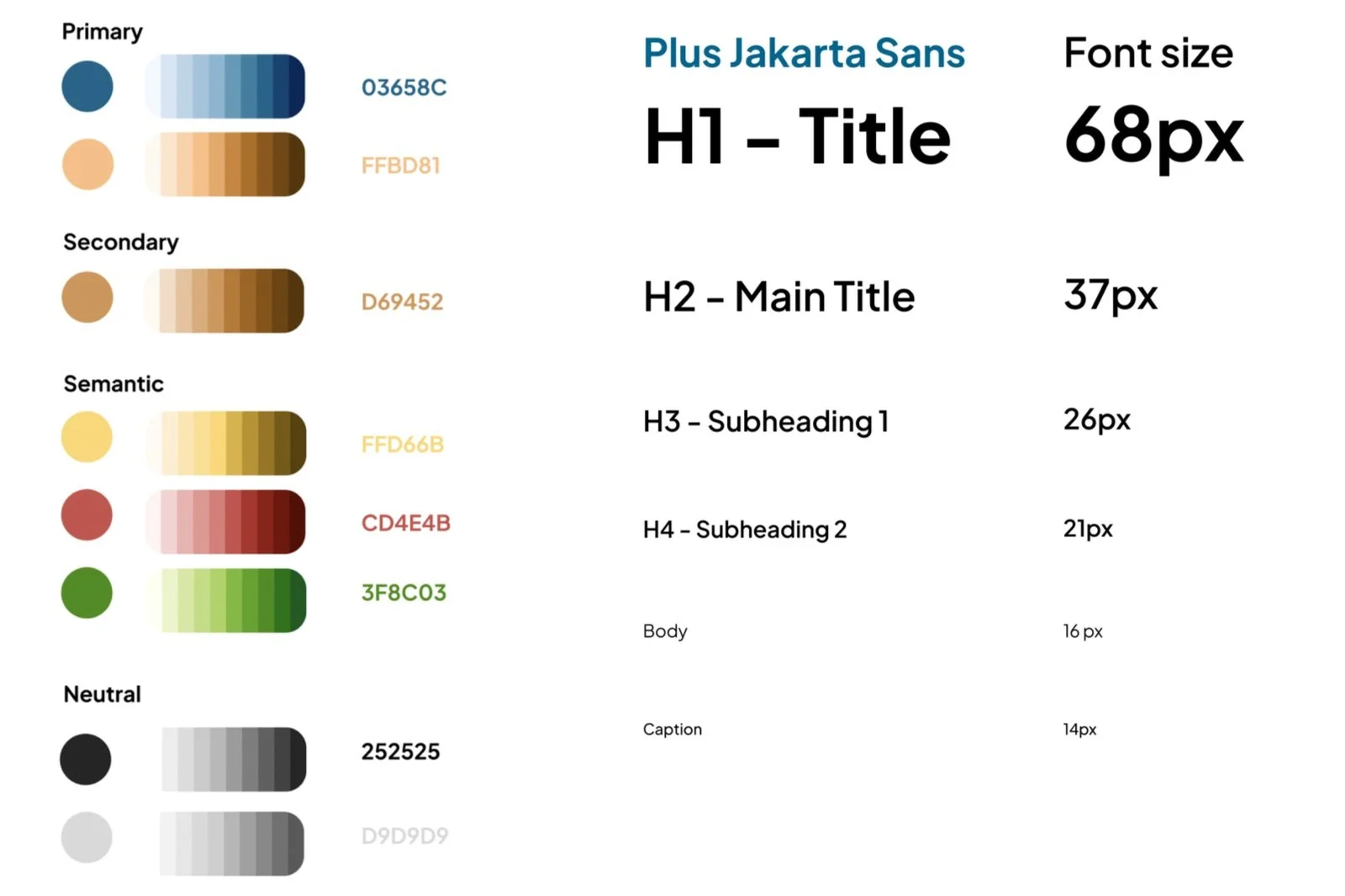
SkillE
Soft Skills Progression App
Elevating the interpersonal and professional skills of motivated young professionals, empowering them to excel and grow in their chosen careers.
Role
UX / UI Designer
UX Researcher
Tools
Figma
LucidChart
Adobe Illustrator
Timeline
Mar 15, 2023
Aug 30, 2023
Overview
Supporting Young Professionals in Advancing Their Careers
Young professionals are facing the challenge of growing their careers. There is currently no guaranteed method of success and many adults are observing this as they continue to build their network. Many adults have the necessary technical skills to perform the role, but lack the “soft” skills required to progress. This is where it was necessary to help professionals identify and understand their short falls regarding soft skills and how to work through them.
How might we help professionals understand their blind spots and quickly learn and apply soft skills intended for career growth?
Solution
Identify blind spots effectively using a Personalized Learning App
By leveraging a tailored learning app designed for professionals, young individuals can efficiently pinpoint areas for enhancing their skills and advancing their careers.
User Interviews
Research and Understanding
“Yeah, I think there’s always going to be room for growth. I think everyone has different preferred methods of communication and communication styles”
“I mean, it sounds silly to say, but it’s like if my communication o my time
management, or my decision making consistently sucked, I would not have a job”
The interview phase consisted of 60 minute interviews that covered topics regarding the interviewee’s work experience, knowledge of soft skills in personal and professional life, and career goals.
The interviews were conducted over zoom, transcribed through a transcription service, and analyzed based on responses.
The responses were categorized by the interviewees’ goals, needs, action, pain points, and feeling.
Initial research uncovered a few areas of interest regarding soft skills. First, we explored what soft skills entail and their significance in various aspects of professional and personal life. Additionally, there was comprehensive research conducted on strategies and techniques to enhance and acquire these valuable skills to thrive in today's competitive environment.
75%
wanted to improve their soft skills in order to reach the next level
67%
believed that they should improve their communication
80%
struggled with time-management and other soft skills post-grad
The interviewees felt that…
Enhancing soft skills boosts promotion prospects
Guidance on what skill to focus on will lead them toward reaching their goals
Communication is the biggest soft skill that they would like to improve.
Soft skills are biggest player in elevating their work performance and skills
Competitive Analysis
There are already self-development applications available, but it appears that the current market does not offer adequate personalization and guidance to help adults achieve their goals.
There was four primary competitors that all educate and help individuals learn and grow. However, understanding how and why the competitors didn’t offer the best soft-skills training to the target user was analyzed and this was influenced through the decision.
User Archetype
The early-stage professional is still fresh in their career and they actively practice and improve their soft skills. This person is still trying to learn how to effectively network and improve their time and stress management skills. Their ultimate goal is to advance within their domain of work and minimize conflict while achieving their professional goals.
User Journey Mapping
In the workshops, we made sure to explore the thought process of young professionals as they considered expanding their skill sets. This deep understanding played a crucial role in evaluating the potential effectiveness of the final design.
The process of recognizing lacking skills, trying to enhance them, and falling short showed the future of the app's potential in pinpointing one's weaknesses.
Workshops
During a series of carefully organized and interesting workshops with the team, the process of card sorting naturally became the main method for pinpointing and ranking the crucial product categories needing immediate focus. The clear agreement on prioritizing personalization was a crucial moment, laying the groundwork for a precise and inclusive app framework to develop smoothly.
Design Decisions
Information Architecture
The information architecture contained 5 primary sections as listed in the design decisions section: home, search, plan, progress summary, and profile.
User Flows
1. Onboard to SKillE:
An early-career professional with under 7 years of experience aims to improve their interpersonal skills to progress in their career despite a hectic schedule. Prioritizing self-development, they choose mobile apps for ease and personalization. Upon finding SkillE, a soft skills learning app, they appreciate its flexibility and specialized content that supports their career advancement goals.
2. Complete training from personalized plan
The young professional spends evenings enhancing their communication skills through a personalized plan. They practice and take notes after dinner to improve for the next workday.
3. Search for specific content:
The new professional joins SkillE's course on a relevant soft skill, using SkillE's platform to find various content types like blogs and videos. They choose their favorite format for further learning.
4. Update personal goals:
The young professional looks to enhance their career by honing their soft skills and setting a new goal. They utilize SkillE's goal section to evaluate their current goals, celebrate accomplishments, and identify areas for improvement. After selecting a new goal, they explore relevant content to support their development.
5. Update selected skills:
After getting feedback at work, a young professional decides to work on a new important skill suggested by their manager. They update their skill profile on the app by removing old skills and adding the new one to focus on improving it.
Ideate and Design
Low Fidelity Wireframes
The app started with simple sketches, but as it developed, more advanced design features and functions were added. These initial sketches laid the groundwork for adding detailed features and improving user interactions. The rough outlines in the images have been enhanced for smooth user navigation. By making gradual improvements based on feedback, the wireframe aims to be both visually appealing and practical to meet user needs.
Low Fidelity User Testing Results
After creating a low-fidelity prototype, users participated in testing to assess the effectiveness of the app's flow and the sufficiency of the information provided to facilitate smooth user interactions. You can further explore the findings in the accompanying graphic.
Visual Interface
Visual Identity
Color
Color Choices for Enhanced App Experience
In selecting a vibrant blue and bronze-like orange color palette, emphasis was placed on conveying an educational and passionate tone. The purpose of these colors is to evoke a sense of professionalism within the app while also fostering an engaging and exciting environment for users to learn and remain focused on achieving their goals.
As a key element in cultivating professionalism and credibility among young professionals, maintaining a robust visual identity is crucial.
Typography
The choice of utilizing the Jakarta Sans font was deliberate, given its high level of user-friendliness and accessibility. This is particularly crucial for users engaging in the learning process. Opting for a sans-serif font was also a conscious decision as it offers a smooth and captivating appearance that is both sleek and engaging.
Combining research and visual elements to build a working prototype
High Fidelity Prototype
The completed final prototype presents a wide range of user flows thoughtfully combined with additional content design elements to enhance the overall user experience.
Key Takeaways
Based on app feedback, users appreciate the app's personalized features and consider them helpful in guiding users to effectively track and monitor their progress. Enhancements to the course structure and search functionality can further enhance the user learning experience.
Future design iterations may incorporate a time element to assist busy, young professionals in effectively managing their efforts to pursue a promotion and enhance their soft skills.


